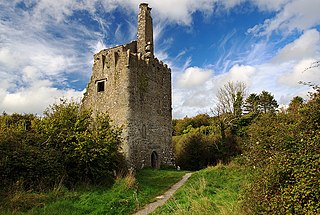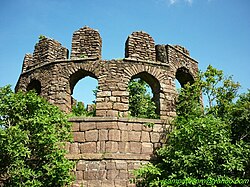
Gavin MacLeod was an American actor best known for portraying Merrill Stubing, the ship's captain, on ABC's The Love Boat and Murray Slaughter on The Mary Tyler Moore Show. A Christian television host and author whose career spanned six decades, he also appeared as a guest on several talk, variety, and religious programs.

Kōchi Prefecture is a prefecture of Japan located on the island of Shikoku. Kōchi Prefecture has a population of 757,914 and has a geographic area of 7,103 km2. Kōchi Prefecture borders Ehime Prefecture to the northwest and Tokushima Prefecture to the northeast.

"John Brown's Body" is a United States marching song about the abolitionist John Brown. The song was popular in the Union during the American Civil War. The tune arose out of the folk hymn tradition of the American camp meeting movement of the late 18th and early 19th century. According to an 1889 account, the original John Brown lyrics were a collective effort by a group of Union soldiers who were referring both to the famous John Brown and also, humorously, to a Sergeant John Brown of their own battalion. Various other authors have published additional verses or claimed credit for originating the John Brown lyrics and tune.

The Ashikaga clan was a prominent Japanese samurai clan which established the Muromachi shogunate and ruled Japan from roughly 1333 to 1573.

Xmas is a common abbreviation of the word Christmas. It is sometimes pronounced, but Xmas, and variants such as Xtemass, originated as handwriting abbreviations for the typical pronunciation. The "X" comes from the Greek letter Chi, which is the first letter of the Greek word Christós, which became Christ in English. The suffix -mas is from the Latin-derived Old English word for Mass.

The Shimazu clan were the daimyō of the Satsuma han, which spread over Satsuma, Ōsumi and Hyūga provinces in Japan.

Fujiwara no Kamatari was a Japanese statesman, courtier and aristocrat during the Asuka period (538–710). He is the founder of the Fujiwara clan, the most powerful aristocratic family in Japan during Nara and Heian periods. He, along with the Mononobe clan, was a supporter of Shinto and fought the introduction of Buddhism to Japan. The Soga clan, defenders of Buddhism in the Asuka period, defeated Kamatari and the Mononobe clan and Buddhism became the dominant religion of the imperial court. Kamatari, along with Prince Naka no Ōe, later Emperor Tenji (626–672), launched the Taika Reform of 645, which centralized and strengthened the central government. Just before his death he received the surname Fujiwara and the rank Taishōkan from Emperor Tenji, thus establishing the Fujiwara clan.

The Tokugawa clan is a Japanese dynasty that was formerly a powerful daimyō family. They nominally descended from Emperor Seiwa (850–880) and were a branch of the Minamoto clan through the Matsudaira clan. The early history of this clan remains a mystery. Members of the clan ruled Japan as shōguns from 1603 to 1867.

Fujiwara no Saneyori, also known as Onomiya-dono, was a Japanese statesman, courtier and politician during the Heian period.
Bihari Muslims are adherents of Islam who identify linguistically, culturally, and genealogically as Biharis. They are geographically native to the region comprising the Bihar state of India, although there are significantly large communities of Bihari Muslims living elsewhere in the Indian subcontinent due to the Partition of British India in 1947, which prompted the community to migrate en masse from Bihar to East Pakistan. Bihari Muslims make up a significant minority in Pakistan under the diverse community of Muhajirs, and largely began arriving in the country following the Bangladesh Liberation War of 1971, which led to the secession of East Pakistan from the Pakistani union as the independent state of Bangladesh. Since 1971, Bihari Muslims residing in Bangladesh are widely referred to as Stranded Pakistanis in Bangladesh who are awaiting repatriation to Pakistan, and have faced heightened persecution in the country due to their collaboration with West Pakistani forces in perpetrating the 1971 Bangladesh genocide against Bengalis and Hindus.
The Filmfare Best Film Award is given by the Filmfare magazine as part of its annual Filmfare Awards South for Tamil (Kollywood) films.

Angus McDonald was a prominent Scottish American military officer, frontiersman, sheriff and landowner in Virginia.

Dromore Castle is a tower house and National Monument located between the towns of Crusheen and Corofin in County Clare, Ireland.

Sri Ramalinga Sowdeswari Amman is a Hindu deity, also known as Sri Chowdeshwari Devi. This goddess is worshiped as Sri Chowdeshwari Devi or Sri Ramalinga Sowdeswari Amman in three forms: Shakti, Chamunda, and Jyothi. Her other names are Banashankari and Soodambigai. She is Kuladevatha of Devanga people.

The Abe Clan is a 1995 Japanese historical television film directed by Kinji Fukasaku. It is an adaptation of the 1913 Japanese short story "Abe ichizoku" by Mori Ōgai, which had previously been adapted into a 1938 theatrical film directed by Hisatora Kumagai and released by Toho.

Moycarn is a barony in County Roscommon, Republic of Ireland.

Rampaging Dragon of the North, also known as North Sea Dragon, is a 1966 Japanese yakuza action crime film directed by Kinji Fukasaku starring Tatsuo Umemiya and produced by Toei Tokyo.

Mat is region in north-central Albania. It takes its name from the Mati River located in the region. The inhabitants are mostly Muslim, traditionally composed of six bajraks: Burrel, Klos, Lis, Lukan, Prell and Xibër.

The Twin Falls saucer hoax was a 1947 flying disc hoax in Twin Falls, Idaho. Amid a nation-wide wave of allege "flying disc" sighted, residents of Twin Falls reported recovering a 30-inch "disc". FBI and Army officials took possession of the disc and quickly proclaimed the object to be a hoax. Press reported that local teenagers admitted to perpetrating the hoax.

















